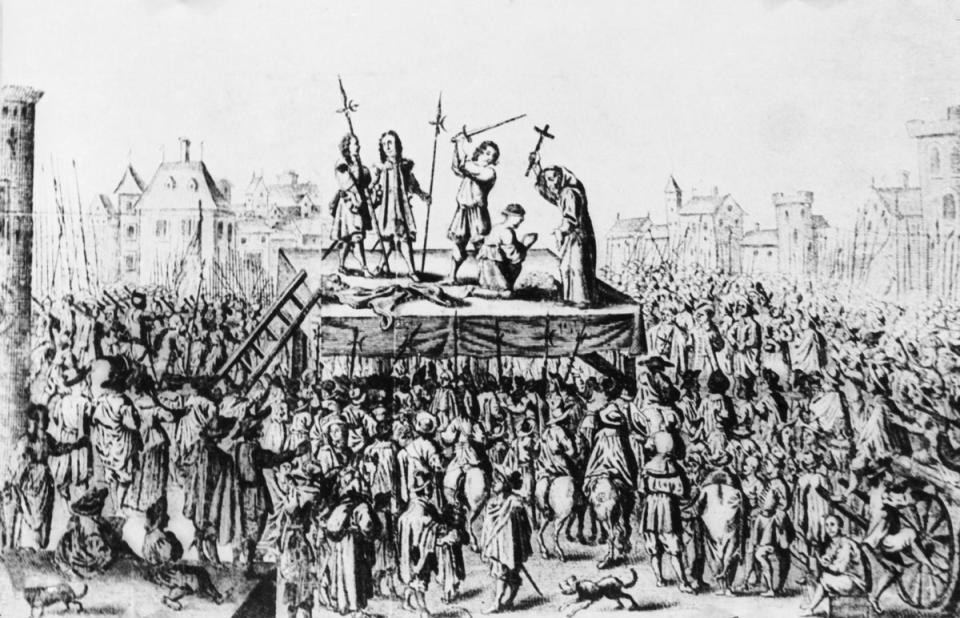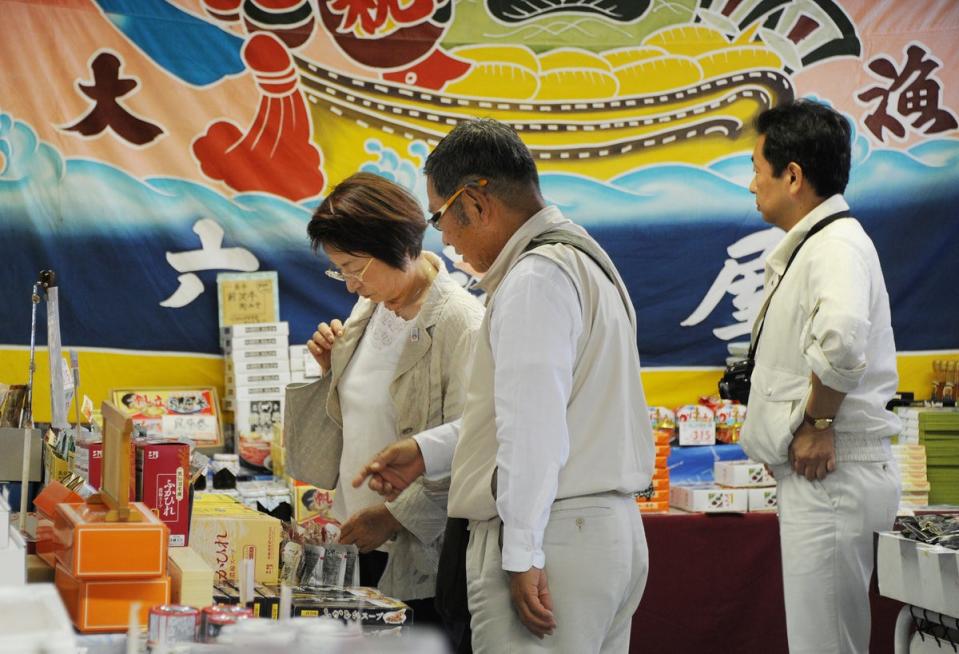From Chernobyl to ground zero of the September 11 terrorist attack in New York City, tourists have long flocked to places where some of the darkest events in human history unfolded.
Lancashire is one such attraction, with interest in the Pendle Witch Trials of 1612, in which ten people were hanged after being imprisoned in Lancaster Castle.
ITV has reported that the fascination with this morbid event has spawned an entire industry, with ghost walks, tours and even commemorative tea towels being created in its memory.
The witch trials have also spawned other obscure tourist attractions across the country, with the village of Pendle Hill attracting visitors thanks to its 1612 statue of victim Alice Nutter.
But it is not the first time that such fascination with a death or disaster site has attracted visitors.

Last year’s news of the missing Titanic submarine captured the world’s attention as people waited with bated breath to find out if the missing five would be found in time.
A documentary about this is currently being shown on Channel 5 – The Titan Sub Disaster: Minute by Minute.
Dr. Donna Pomade, a specialist in studying dark tourism, said: “It may seem strange to many of us, but a morbid curiosity draws tourists to the strangest – and most foreboding – corners of the world.”
Speaking to The Independent, she said: “That’s why news of the missing Titan submarine has captured the attention – and imagination – of the world. As a scholar in the growing field of “dark tourism” research, activities like the ill-fated OceanGate expedition and other landmarks linked to suffering and tragedy come as no surprise to me.
“The phenomenon of ‘dark tourism’ has fascinated researchers for years, but tourists are increasingly drawn to places associated with atrocities, violence and disasters. Historical sites include Auschwitz-Birkenau, Chernobyl (before the war in Ukraine), and Ground Zero. But ‘experiences’ can now include excursions to places of slavery, war, famous deaths, serial murders, natural disasters and, as in the case of the OceanGate voyage, maritime tragedies such as the Titanic.”
But what is dark tourism and why is there such a morbid fascination with visiting death sites? Here’s everything we know:
What is dark tourism?


Dark tourism is defined as tourism that involves traveling to places historically associated with death and tragedy.
This may include genocide, murder, incarceration, ethnic cleansing, war or disaster – natural or accidental.
J John Lennon, professor of tourism at Glasgow Caledonian University in Scotland, coined the term in 1996, but said this is a practice that has been going on for centuries.
Speaking to The Washington Post, he said: “It’s not a new phenomenon. There is evidence that dark tourism dates back to the Battle of Waterloo, where people watched the battle from their carriages.”
It’s likely that people have been drawn to the dark and morbid throughout history, with people even selling lurid souvenirs at executions, from ancient Rome to 17th century London.
Why do people feel the urge to visit obscure tourist sites?
According to psychologists, there are reasons why people feel the need to visit morbid places associated with the worst of human history.
Psychologist Dr Mark Griffiths has studied the fascination with dark tourism and said there could be several reasons why people seek out the darkest spaces to explore.
He even wrote an article in Psychology Today about the reasons, citing empathy, disgust and education as all the reasons.
He wrote: “The reasons tourists are drawn to dark tourist spots stem, at least in part, from the same curiosity that motivates a visit to Niagara Falls. Visiting obscure tourist sites is a special experience, and therefore attractive for its uniqueness and as a means of satisfying human curiosity. So the main reason is the experience of the unusual.
“Another reason for visiting dark tourist sites may be empathy, which is an acceptable way of expressing a fascination with horror… In many ways, the interpretation of dark tourist sites can be difficult and sensitive, given the message of the site as it is communicated. by exhibition curators can sometimes conflict with visitors’ insights.
“Horror is also considered to be one of the main reasons for visiting dark tourism sites, and in particular atrocity sites… Thus, associating atrocity as a heritage in a place is as entertaining as any media portrayal of a story, and for exactly the same reasons and with the same moral undertones. Such tourist products or examples are: Ghost Walks around places of execution or murder (Ghost Tour of Prague), Murder Trails that can be found in many cities, such as Jack the Ripper in London.”
And in an age before television, the Internet and computer games, many would turn to dark tourism for entertainment – and also to make money from this lustful, but very human curiosity.
The 1842 Punch magazine stated: ‘Murder is undoubtedly a most shocking crime; nevertheless, since what is done cannot be undone, let us make money from it. Here we turn a murderer into a commodity and open a Homicide account….
“We show a murderer ‘as men show a monkey’… We lurk near his prison bars – become Newgate eavesdroppers – we pay turnkeys – get the executioner’s protection – leave no vile task undone – no loathsome path untrodden to satisfy the appetite we create – a morbid, wolfish craving for all that is vile and hideous in humanity.”
Where are some of the most popular spots for dark tourism?
Auschwitz-Birkenau, Poland
Auschwitz Concentration Camp was a complex of concentration and extermination camps operated by Nazi Germany in occupied Poland during World War II and the Holocaust.
Visitors can purchase tickets to see a variety of macabre artifacts – from the luggage seized by the Nazis, photos of families separated, and even a section of human hair shaved from the heads of Jewish prisoners.
Chernobyl and Pripyat, Ukraine
The Chernobyl disaster occurred when engineers at the Unit 4 nuclear reactor attempted a poorly designed experiment. A number of mistakes led to an uncontrolled chain reaction that resulted in several huge explosions. The area was considered radioactive and residents had to flee.
Officially, 31 people died, but many believe the number is much higher, and the area is still uninhabitable.
There have been tours available to the area, which has been described as “eerie” by many who have been there, but tours are not currently being offered due to the Russian invasion of Ukraine.


9/11 Memorial and Museum, Ground Zero, New York, USA
The September 11 attacks, commonly known as 9/11, were suicide bombings carried out by the Islamist extremists Al-Qaeda against the United States.
The World Trade Center, known as Twin Towers, was a famous part of the New York skyline and planes were deliberately flown into it, causing it to collapse.
The attacks of September 11, 2001 caused the deaths of 2,996 people and now visitors can see ‘Ground Zero’, the site where the Twin Towers used to stand.
There is also a museum to visit and guided tours for those who want to learn more about the site.
Rwanda
The Rwandan genocide took place between April and July 1994, during the Rwandan civil war. During this period of approximately 100 days, members of the Tutsi ethnic minority group, as well as some moderate Hutus and Twas, were killed by armed military police.
The UN estimates that around 800,000 Rwandans were brutally slaughtered and tourists can now visit the Gisozi Genocide Memorial Centre, which is the final resting place for more than 250,000 victims of the genocide.
It is located near the center of the Rwandan capital Kigali, where the main airport is located.
Hiroshima, Japan
Hiroshima, a city on the Japanese island of Honshu, was largely destroyed by an atomic bomb during World War II.
It is estimated that the effects of the atomic bombings killed between 90,000 and 146,000 people in Hiroshima, and now tourists flock to the area to see the ruins, which still remain to this day.
There is a memorial walk and gardens that promote ‘peace’ that people can visit.
Alcatraz, America
Alcatraz, an island off the coast of San Francisco, was a maximum security prison that housed infamous gangsters such as Al Capone and Robert Stroud, also known as the ‘Bird Man’ of Alcatraz.
The prison was closed in 1963, but that was not the end of the story of the former prison.
People can now book to cross a ferry and take part in day trips, night trips or even a guided tour of all areas, complete with guides.